
Benedetto Giacomo Marcello was an Italian composer, writer, advocate, magistrate, and teacher.

A madrigal is a form of secular vocal music most typical of the Renaissance and early Baroque (1600–1750) periods, although revisited by some later European composers. The polyphonic madrigal is unaccompanied, and the number of voices varies from two to eight, but usually features three to six voices, whilst the metre of the madrigal varies between two or three tercets, followed by one or two couplets. Unlike the verse-repeating strophic forms sung to the same music, most madrigals are through-composed, featuring different music for each stanza of lyrics, whereby the composer expresses the emotions contained in each line and in single words of the poem being sung.
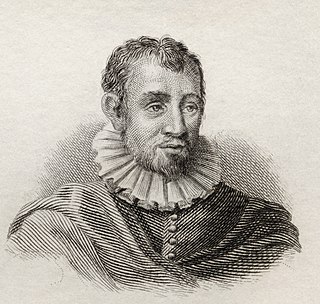
Agostino Agazzari was an Italian composer and music theorist.
Alessandro Grandi was a northern Italian composer of the early Baroque era, writing in the new concertato style. He was one of the most inventive, influential, and popular composers of the time, probably second only to Monteverdi in northern Italy.

Felice Anerio was an Italian composer of the late Renaissance and early Baroque eras, and a member of the Roman School of composers. He was the older brother of another important, and somewhat more progressive composer of the same period, Giovanni Francesco Anerio.
Bartolomeo Barbarino was an Italian composer and singer of the early Baroque era. He was a virtuoso falsettist, and one of the most enthusiastic composers of the new style of monody.
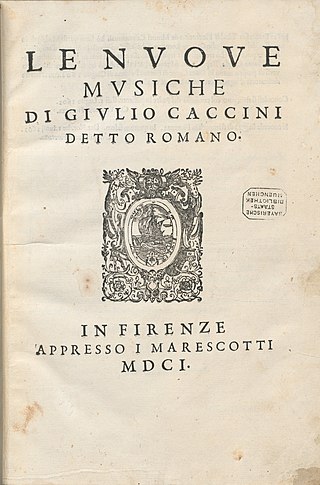
Giulio Romolo Caccini was an Italian composer, teacher, singer, instrumentalist and writer of the late Renaissance and early Baroque eras. He was one of the founders of the genre of opera, and one of the most influential creators of the new Baroque style. He was also the father of the composer Francesca Caccini and the singer Settimia Caccini.
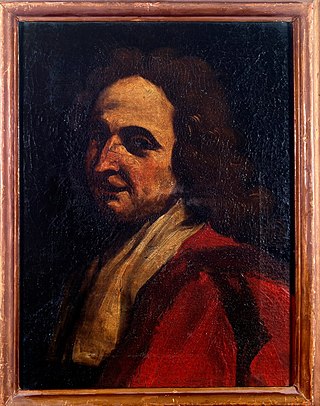
Stefano Landi was an Italian composer and teacher of the early Baroque Roman School. He was an influential early composer of opera, and wrote the earliest opera on a historical subject: Il Sant'Alessio (1632).
Giammateo Asola was an Italian composer of the late Renaissance. He was a prolific composer of sacred music, mostly in a conservative style, although he may have been one of the first composers to write a part for basso continuo.

Cornelis Verdonck was a Flemish composer of the late Renaissance. He was one of the last members of the Franco-Flemish school of polyphony, and was a notable composer of madrigals in a style that blended both Italian and native Netherlandish idioms.
Peter Philips was an eminent English composer, organist, and Catholic priest exiled to Flanders. He was one of the greatest keyboard virtuosos of his time, and transcribed or arranged several Italian motets and madrigals by such composers as Lassus, Palestrina, and Giulio Caccini for his instruments. Some of his keyboard works are found in the Fitzwilliam Virginal Book. Philips also wrote many sacred choral works.
Giovanni Girolamo Kapsperger was an Austrian-Italian virtuoso performer and composer of the early Baroque period. A prolific and highly original composer, Kapsberger is chiefly remembered today for his lute and theorbo (chitarrone) music, which was seminal in the development of these as solo instruments.
Seconda pratica, Italian for "second practice", is the counterpart to prima pratica and is sometimes referred to as Stile moderno. The term "Seconda pratica" first appeared in 1603 in Giovanni Artusi's book Seconda Parte dell'Artusi, overo Delle imperfettioni della moderna musica, where it is attributed to a certain L'Ottuso Accademico. In the first part of The Artusi (1600), Artusi had severely criticized several unpublished madrigals of Claudio Monteverdi. In the second part of this work, L'Ottuso Accademico, whose identity is unknown, defends Monteverdi and others "who have embraced this new second practice". Monteverdi adopted the term to distance some of his music from that of e.g. Giovanni Pierluigi da Palestrina and Gioseffo Zarlino and to describe early music of the Baroque period which encouraged more freedom from the rigorous limitations of dissonances and counterpoint characteristic of the prima pratica.

The cornettino is the descant instrument of the cornetto family. Cornettini usually have a primary scale of C or D major, with middle C or the adjacent D the pedal note of the instrument. The regular cornett is the 'treble' instrument of the family.
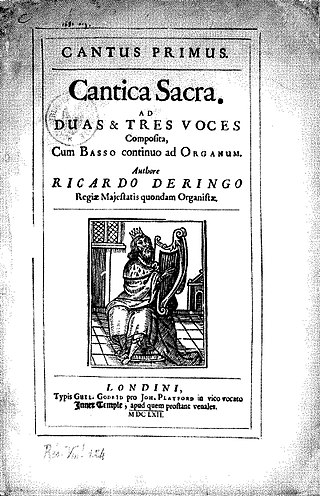
Richard Dering — also Deering, Dearing, Diringus, etc. — was an English Renaissance composer during the era of late Tudor music. He is noted for his pioneering use of compositional techniques which anticipated the advent of Baroque music in England. Some of his surviving choral works are part of the repertoire of Anglican church music today.
The year 1609 in music involved some significant events.
The year 1617 in music involved some significant events.
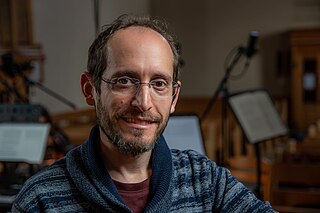
Elam Rotem is a composer, singer, and harpsichordist based in Basel, Switzerland. He is a leading expert in early music, specifically the music of the turn of the 17th century. He is the founder and director of the group Profeti della Quinta and maintains Early Music Sources, a website collating writings and information on the subject of early music.

The Missa primi toni octo vocum is a mass setting for double choir composed by Stefano Bernardi in 1630 for the Salzburg Cathedral where he was music director.










